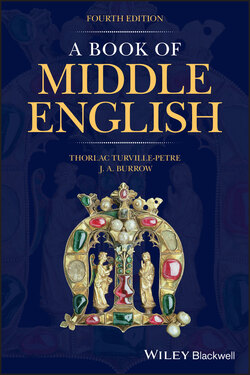Читать книгу A Book of Middle English - J. A. Burrow - Страница 37
4.3.4 Third Person Pronouns: Feminine Singular
ОглавлениеThe changes affecting the feminine and plural pronouns over the period were far‐reaching. The forms were not sufficiently distinctive, particularly with the blurring of the quality of the vowel, and in any case varied greatly from dialect to dialect as the result of regular sound‐changes. The chaotic results are illustrated above from The Owl and the Nightingale, where he may represent either ‘he’ or ‘she’, hi may be feminine or plural, nominative or accusative.
The distinctive nominative feminine form she, the origin of which is disputed, was adopted at very different times in different parts of the country. In the spelling scæ, it first appears in the final section of The Peterborough Chronicle in the mid‐twelfth century, but two hundred years later the form ho is regularly used in the Gawain manuscript, side by side with occasional instances of scho. By the early fourteenth century, the old accusative form hi had been supplanted by the dative hire, a development that had already taken place in The Peterborough Chronicle, where hire is used as a direct object.
